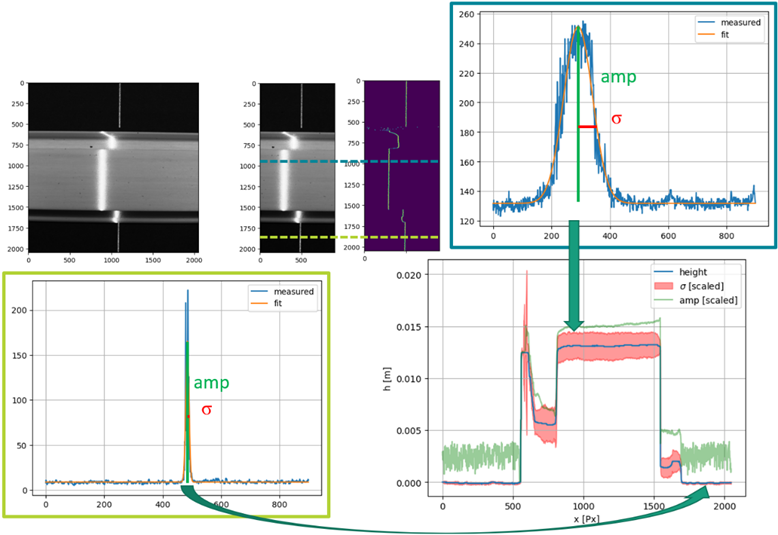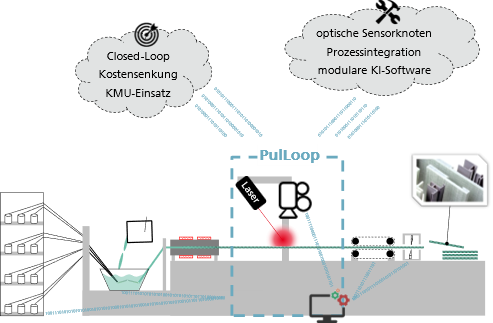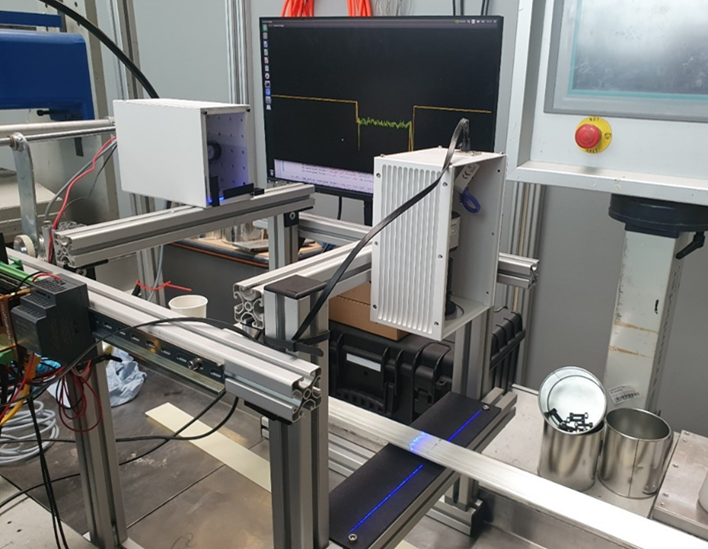Development and evaluation of an inexpensive inline measuring system
For continuous production processes such as extrusion or pultrusion, there are currently no cost-effective and integrated inline measuring systems available for monitoring the profile geometry and surface. An objective measuring system would reduce production waste and enable data-driven process development. The commissioning of new profile geometries in particular is fraught with time and financial uncertainty, as empirical values have so far only been available subjectively. Without spatially resolved component monitoring, documentation-intensive industries can only be supplied to a limited extent.
The lack of integration of measurement hardware and software in production systems (closed-loop principle) makes it difficult for small and medium-sized enterprises (SMEs) to use continuous production processes, as cost- and material-efficient installation and operation are not possible.
The aim of PulLoop is to develop an optical measurement system that is significantly more cost-effective than previous measurement systems. In addition, a modular, AI-based evaluation software will be created that enables rapid training and thus supports use in production environments. In addition, a closed-loop approach will be designed, which can only be realized with the new measuring system.



